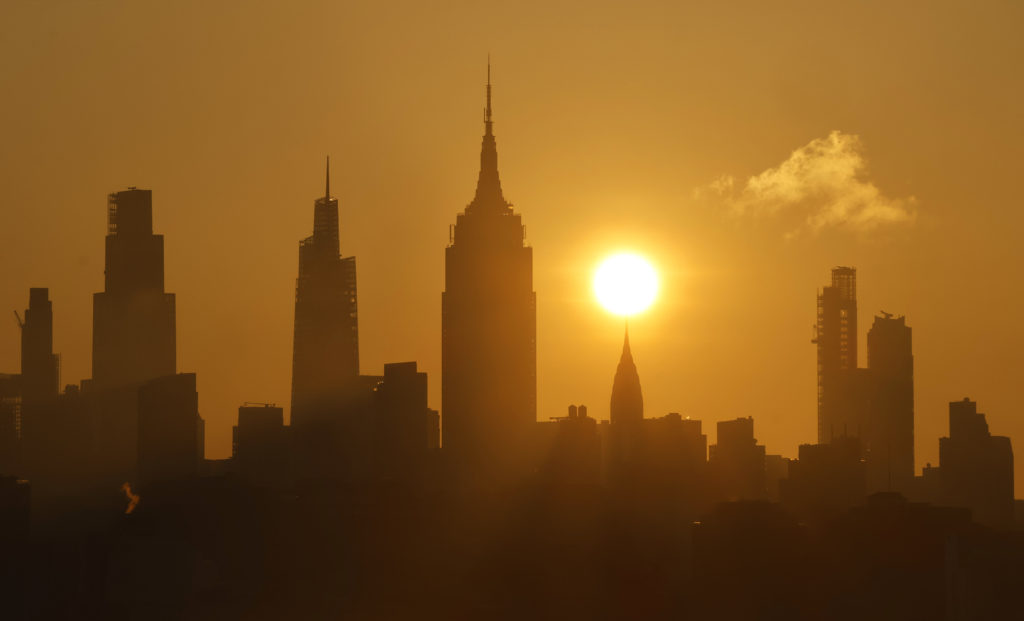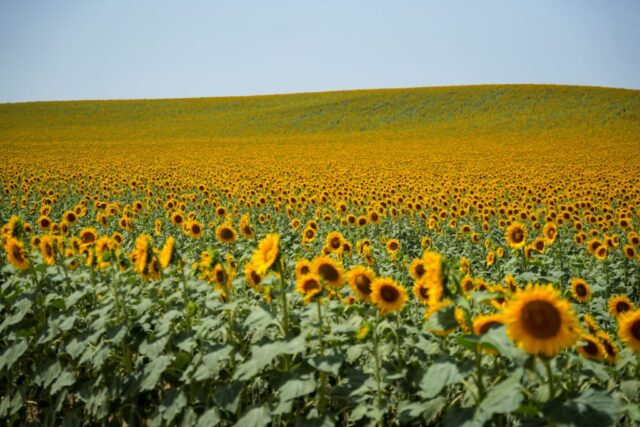


Peak sunshine has arrived in the Northern Hemisphere — the summer solstice.
Friday is the longest day of the year north of the equator, where the solstice marks the start of astronomical summer. It’s the opposite in the Southern Hemisphere, where it is the shortest day of the year and winter will start.
READ MORE: The science behind the summer solstice
The word “solstice” comes from the Latin words “sol” for sun and “stitium” which can mean “pause” or “stop.” The solstice is the end of the sun’s annual march higher in the sky, when it makes its longest, highest arc. The bad news for sun lovers: It then starts retreating and days will get a little shorter every day until late December.

Midsummer celebrations on the island of Gotland, Sweden, on June 20, 2025, marking the summer solstice with flower crowns, dancing, and maypole raising. Photo by Jonathan Nackstrand/ AFP via Getty Images
People have marked solstices for eons with celebrations and monuments, including Stonehenge, which was designed to align with the sun’s paths at the solstices. But what is happening in the heavens? Here’s what to know about the Earth’s orbit.
Solstices are when days and nights are at their most extreme
As the Earth travels around the sun, it does so at an angle relative to the sun. For most of the year, the Earth’s axis is tilted either toward or away from the sun. That means the sun’s warmth and light fall unequally on the northern and southern halves of the planet.
The solstices mark the times during the year when this tilt is at its most extreme, and days and nights are at their most unequal.

The sun rises behind the skyline of midtown Manhattan and the Empire State Building in New York City, a day ahead of the summer solstice and an expected heat wave on June 19, 2025, as seen from Jersey City, New Jersey. Photo by Gary Hershorn/ Getty Images
During the Northern Hemisphere’s summer solstice, the upper half of the earth is tilted toward the sun, creating the longest day and shortest night of the year. This solstice falls between June 20 and 22.
READ MORE: Prepare yourself for several years of killer heat, top weather forecasters warn
Meanwhile, at the winter solstice, the Northern Hemisphere is leaning away from the sun — leading to the shortest day and longest night of the year. The winter solstice falls between December 20 and 23.
The equinox is when there is an equal amount of day and night
During the equinox, the Earth’s axis and its orbit line up so that both hemispheres get an equal amount of sunlight.
The word equinox comes from two Latin words meaning equal and night. That’s because on the equinox, day and night last almost the same amount of time — though one may get a few extra minutes, depending on where you are on the planet.

People enjoy the hot weather at Cullercoats Beach in the United Kingdom on June 20, 2025. Photo by Owen Humphreys/ PA Images via Getty Images
The Northern Hemisphere’s spring — or vernal — equinox can land between March 19 and 21, depending on the year. Its fall – or autumnal — equinox can land between Sept. 21 and 24.
On the equator, the sun will be directly overhead at noon. Equinoxes are the only time when both the north and south poles are lit by sunshine at the same time.
What’s the difference between meteorological and astronomical seasons?
These are just two different ways to carve up the year.

Children jump into the Dal Lake to beat the heat on a hot day on June 20, 2025 in Srinagar, India. An intense heat wave has gripped Kashmir, pushing temperatures above 95 degrees Fahrenheit. Photo by Waseem Andrabi/ Hindustan Times via Getty Images
While astronomical seasons depend on how the Earth moves around the sun, meteorological seasons are defined by the weather. They break down the year into three-month seasons based on annual temperature cycles. By that calendar, spring starts on March 1, summer on June 1, fall on Sept. 1 and winter on Dec. 1.
Support PBS News Hour
Your donation makes a difference in these uncertain times.














































